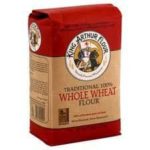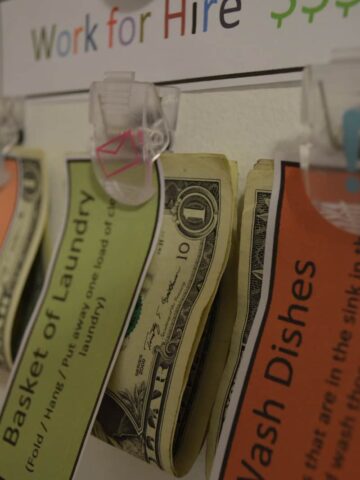To be totally honest here, I really didn’t know what all the fuss was about regarding flours. In the beginning of becoming unprocessed I just avoided ‘white’ products. But I avoided them with just with the basic understanding they weren’t the best choices. I had heard whole grain or whole wheat was better. But what I DIDN’T know was how truly harmful they actually were to me and my family! I decided to do a little research into this subject and with all the different types of flours out there it’s no wonder people get confused. There’s refined white flours, cake flours, self rising flours. Add to it whole wheat, bromated, bleached, and unbleached. The list seems endless! Well today’s post is designed to help break down some of the confusion and educate you on what you should be looking for and what you should be avoiding.
Q – What are the different types of flours?
Let’s start with the one most familiar to everyone. The all purpose white flour. All Purpose flour is most commonly used in making cookies, cakes, muffins, and biscuits.
This type of flour comes bleached and unbleached.
- Unbleached flour is flour that is bleached naturally
- Bleached flour has been chemically treated
So let’s break this down… white flour is made from whole wheat grains. A whole grain of wheat has three layers.
- The Bran
- The Germ
- The Endosperm
The bran is where you’ll find most of the fiber. The germ is the nutrient dense embryo that will sprout into a new wheat plant. And the endosperm is the largest part of the grain. White flour is made from the endosperm only. Old stone mills used to grind flour slowly, but today’s methods are mass produced and much faster. Even most of your whole wheat flour has lost a lot of nutrients due to this type of processing. They start by peeling off the husk and bran and crushing the grain. The husk and bran are the most nutritious parts. Refining food destroys nutrients. What’s remaining are pure carbohydrates or a form of sugar. For a more in depth look at the history of bleaching flour and Pilsbury visit Mercola’s site for a nice review. But for now we’ll move on.
Q – So how does the flour become bleached?
Bleached flour, as you may have guessed, is whiter than the unbleached flour. But how did it get that way? Well when flour is chemically bleached, it is similar to bleaching your clothes in the laundry!!! Flour bleaching agents are a food additive added to flour in order to make it appear whiter (source Wikipedia). A few of these toxic chemical bleaching agents used are:
Use of chlorine bromates and peroxides is not allowed in the European Union!
In Australia and Europe the use of azodicarbonamide as a food additive is not approved! (Source: Wikipedia.org) *The United States permits the use of azodicarbonamide at levels up to 45 parts per million (ppm). If other countries have seen the dangers in these toxic chemicals and banned them from use why won’t the United States follow suit?? This brings us to bromated flour …
Q – What is bromated flour?
Besides bleaching the flour another process is called bromating. Bromated flour is a flour that has been treated with potassium bromate to improve the doughs elasticity and produce a higher rise. Nearly all the flour in your supermarket has been bromated. Commercial bakers use it for it’s dependable rise. Home bakers use it for the same reasons. The substance, in theory, is supposed to bake out as it cooks, but if any remains behind it can be very harmful. Did you know bromate is considered a category 2B carcinogen (possibly carcinogenic to humans) by the International Agency for Research on Cancer (IARC)? According to Wikipedia, bromate in drinking water is undesirable because it is a suspected human carcinogen. And as a matter of fact, its presence in Coca Cola’s Dansani bottled water forced an embarrassing recall of their water in the UK (click here to read that story)!
Bromate has been banned in most developed countries since 1994, including the UK and Canada! In addition, in 1991, California declared bromate a carcinogen under the state’s Proposition 65. Baked goods sold in California would have to bear a store level cancer warning if they contained more than a certain level of bromate. As a result, most California bakers have switched to bromate-free process. In the US bromated flour is legal, however labeling is NOT required, although some states may require flour producers to label the flour if it has been bromated.
Q – What should I look for?
When buying flour unbleached unbromated is the way to go. Be a label reader! Avoid products with white flour or “enriched” flour in the ingredients. That includes breads, cookies, biscuits, donuts, pie crusts, rolls. Eat whole wheat breads, rye breads. Even better are sprouted breads. Your best bet is to find a bakery that doesn’t use bromated flours. I found one within 5 miles of my house in our wonderful downtown area, Boule Artisan Bakery. I spent some time speaking with the owner Shawn about the old fashioned methods they use to make their bread. Their bread takes THREE DAYS to rise and it’s wonderful!!
Q- Where can I find non bromated flour?
INTERESTING TIP!
Flour has to get shipped to the manufacturers who are using it, cereal companies and bread companies. And when this flour gets shipped it is difficult to avoid rodents, bugs, mice and rats. Well when shipping white flour no insecticides are used. Why? B/c white flour when consumed by these little critters kills them! White flour is a natural insecticide! So by the time the white flour reaches shore and is being transported to your favorite Kellogg’s cereal you can be assured it has had it’s fair share of many dead rodents in the bag. They died by eating the white flour!! So why would it be ok for US to eat it???
RESOURCES:
- International Agency for Research on Cancer
- www.wikipedia.com
- www.kingarthur.com
- www.mercola.com
- www.bbc.co.uk
- www.wisegeek.com









Why no data given on whether the cooking out the bromate theory is or isn’t true?
Its all about business